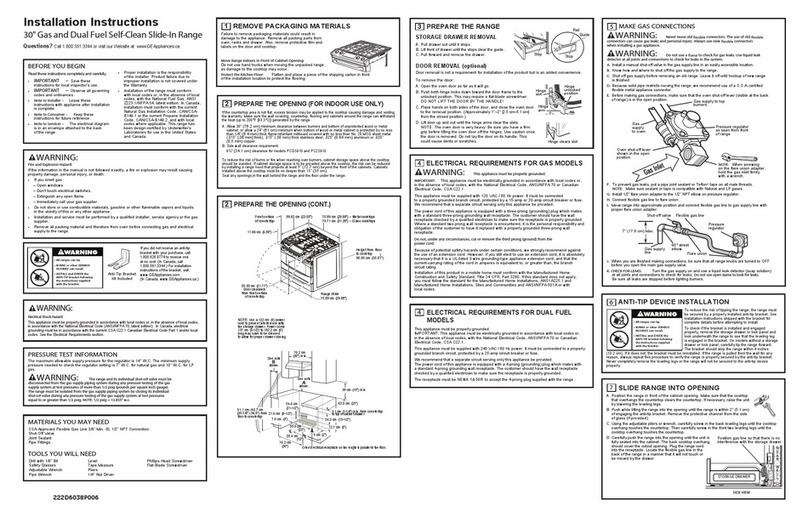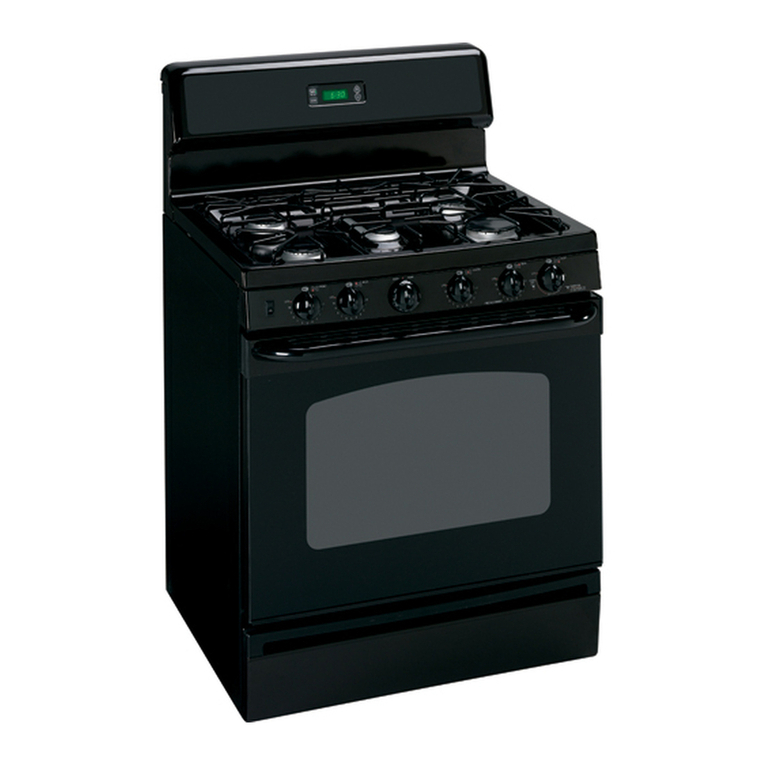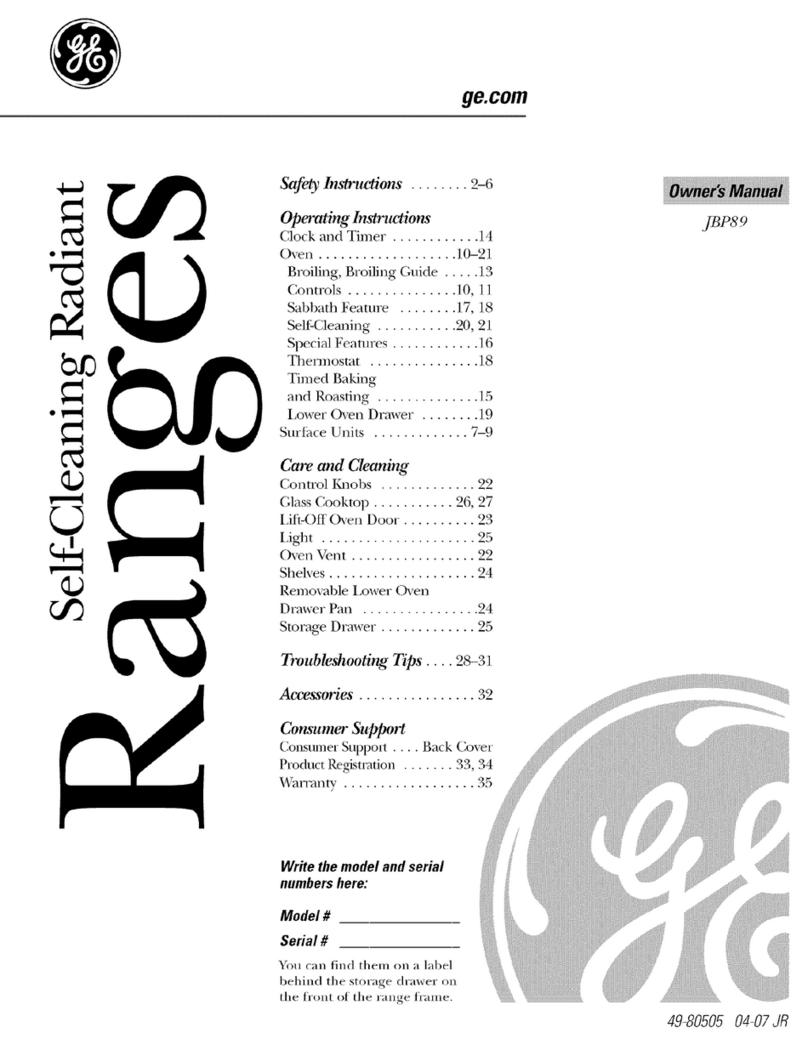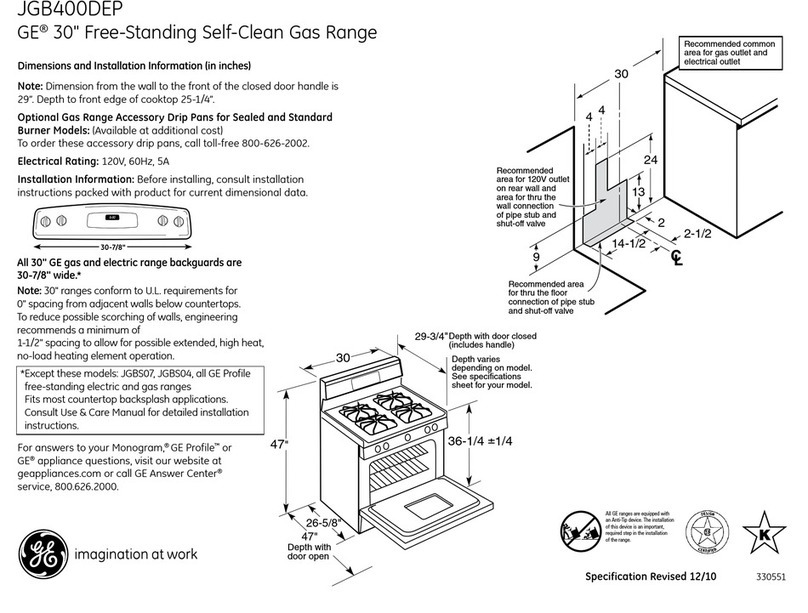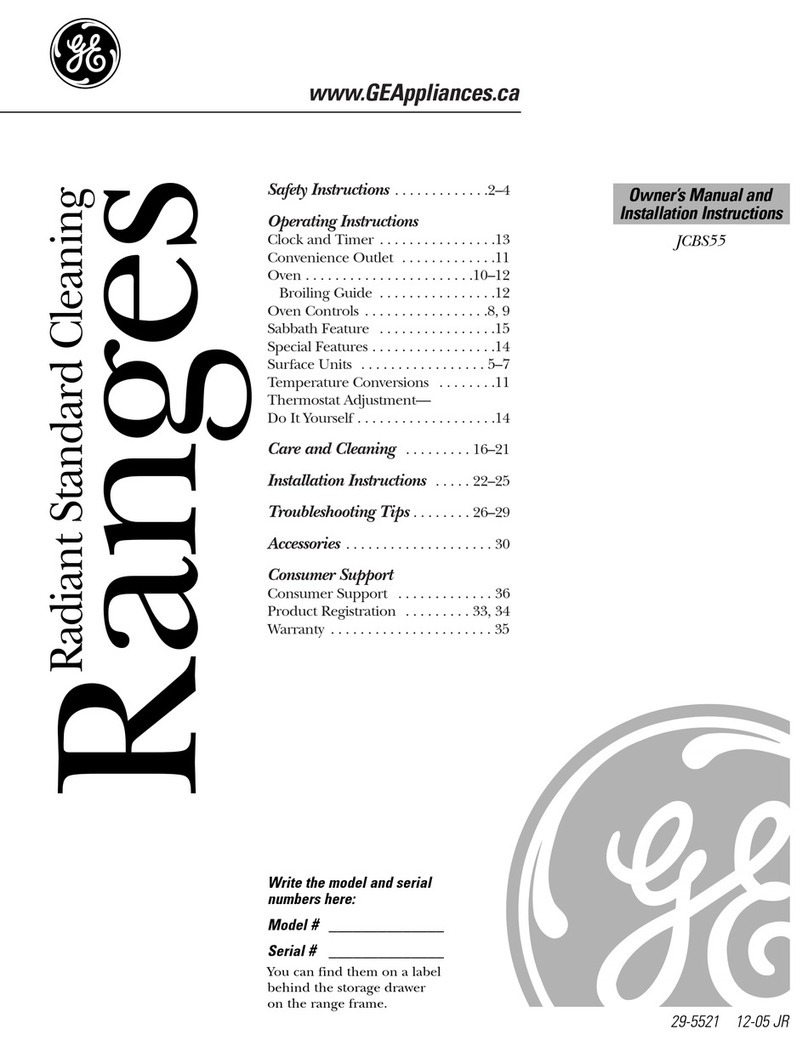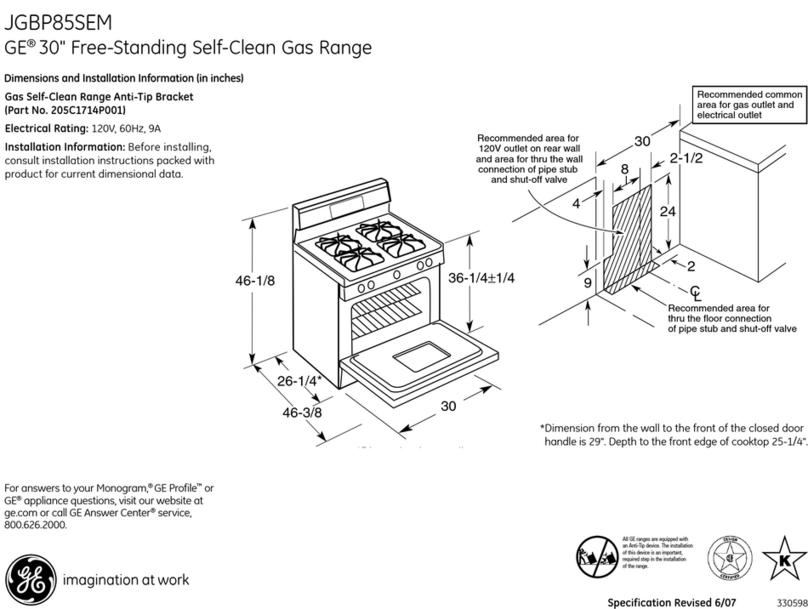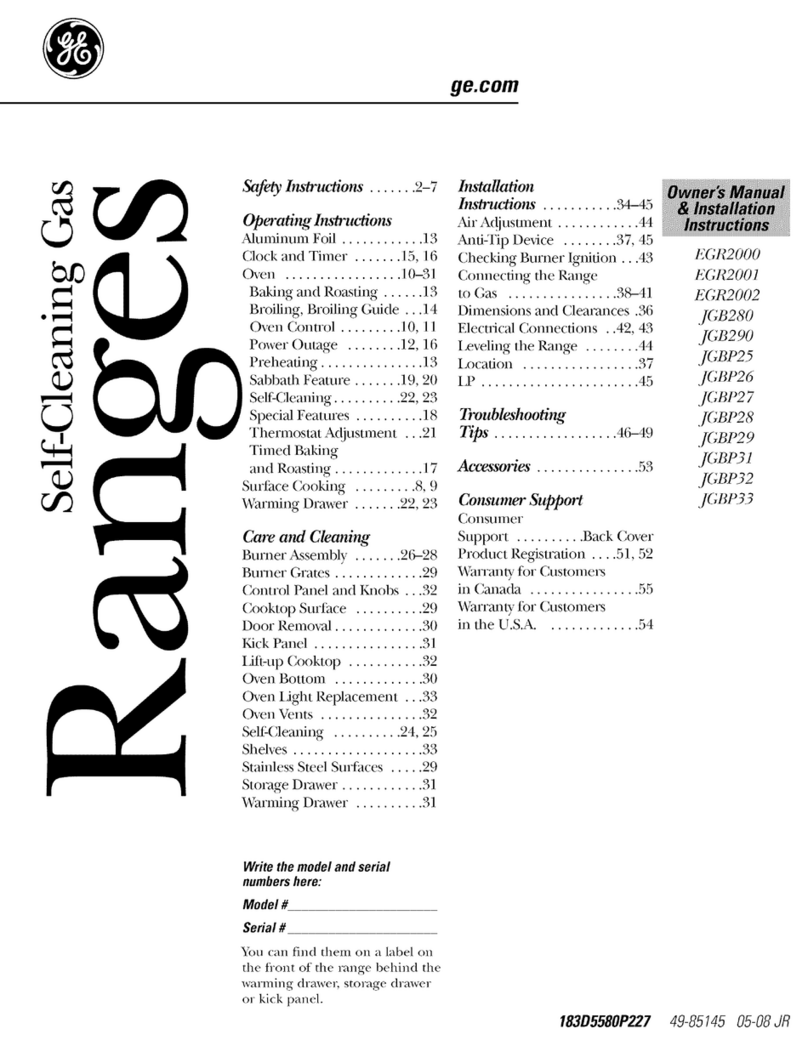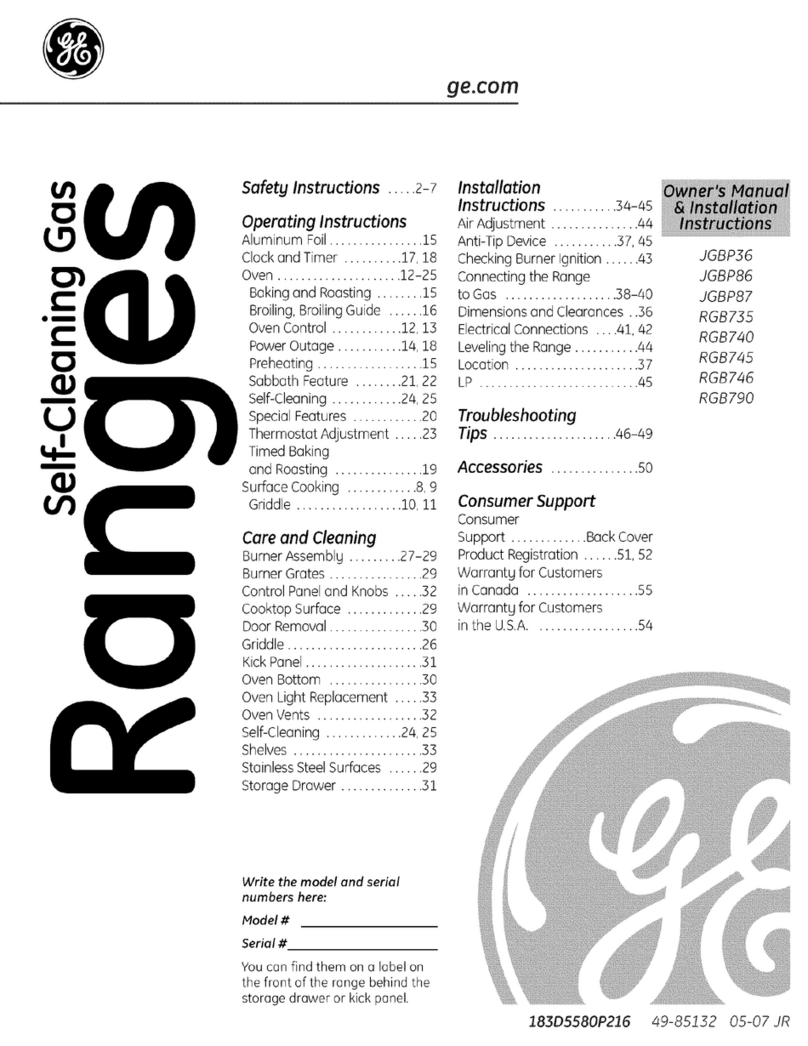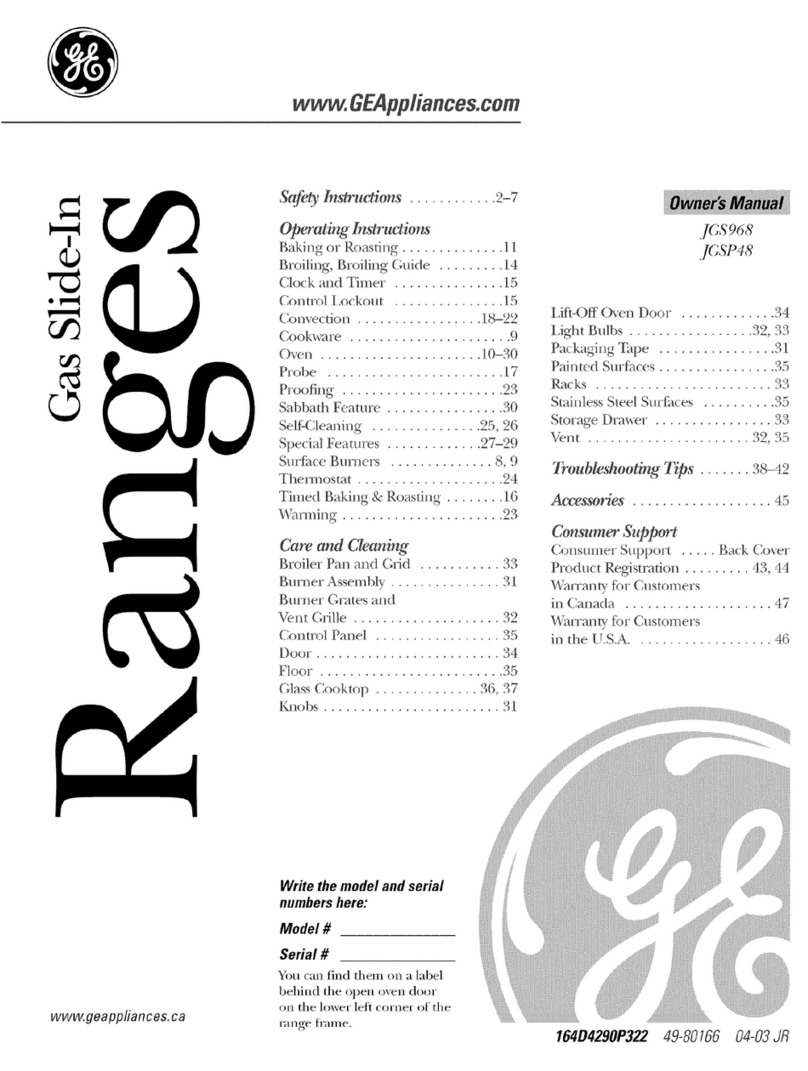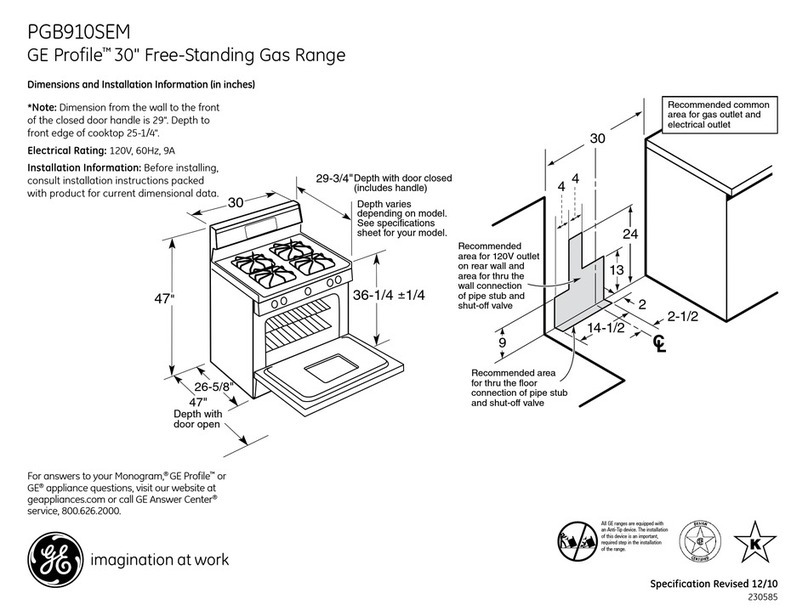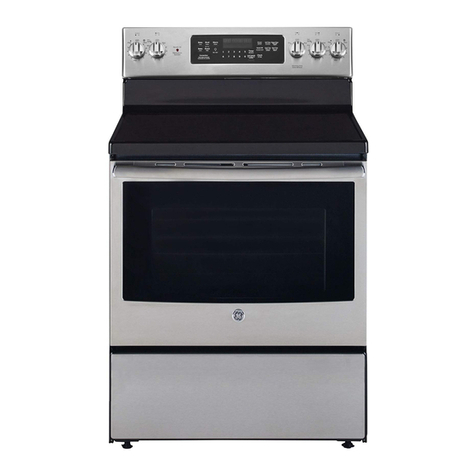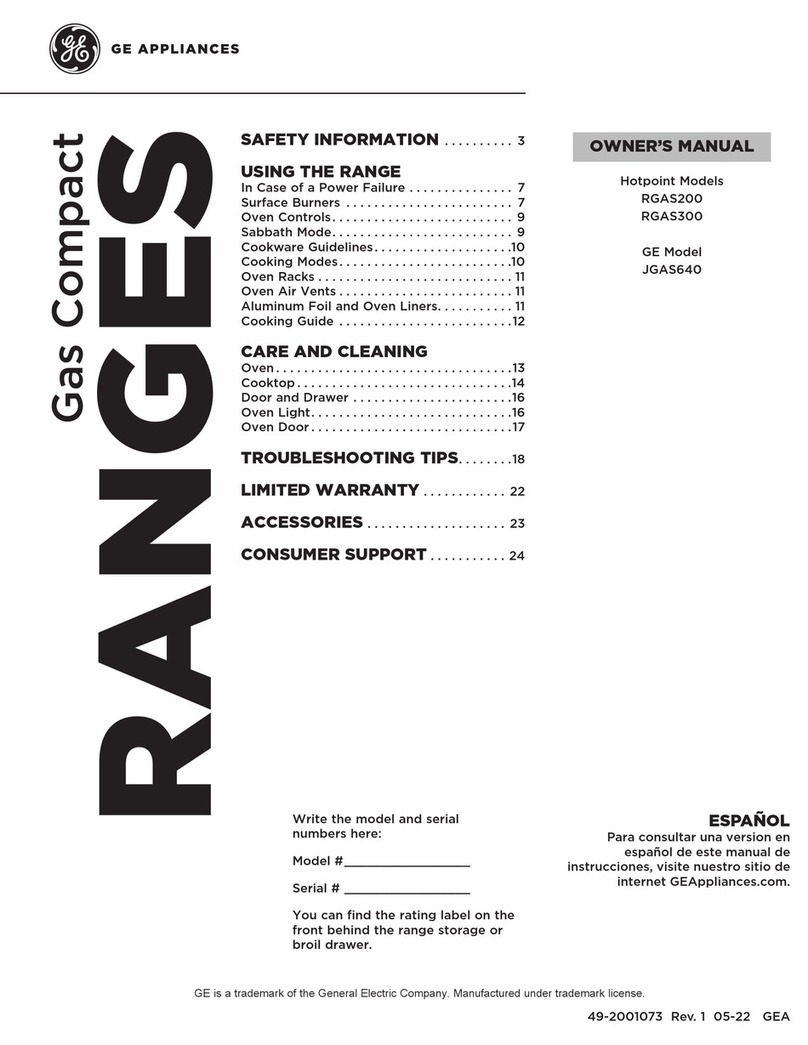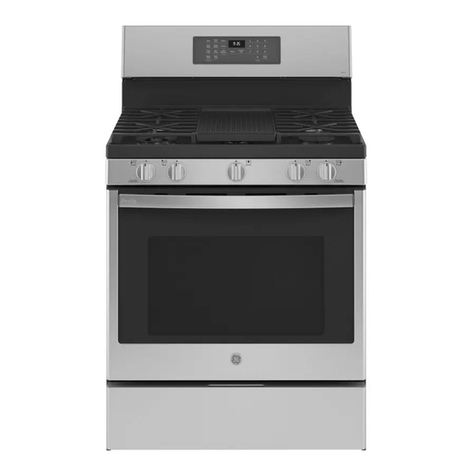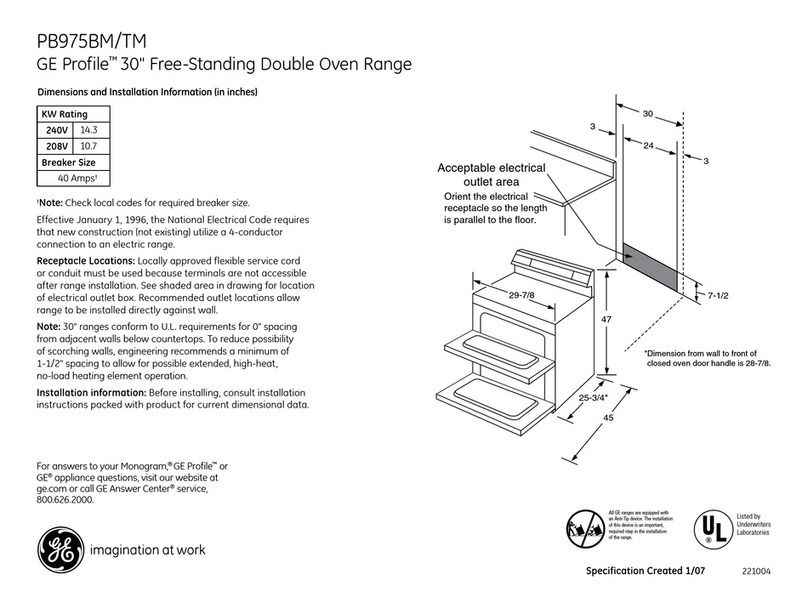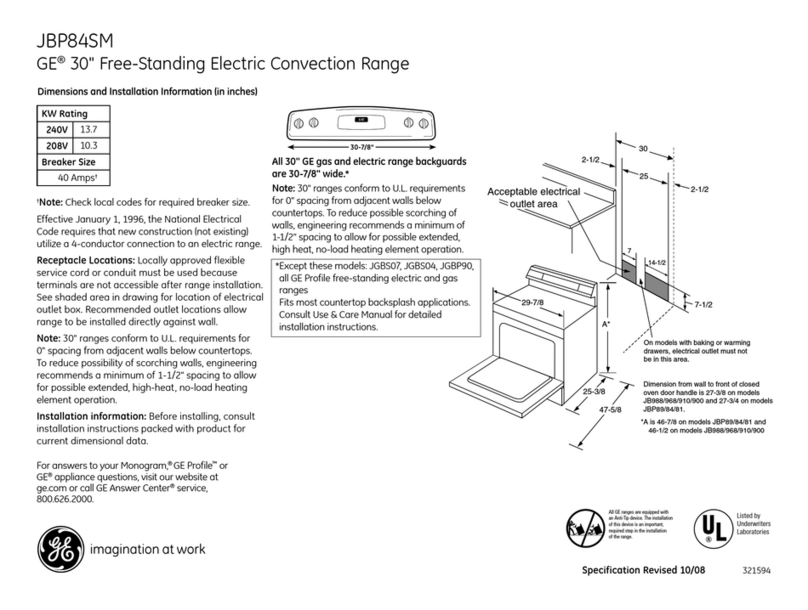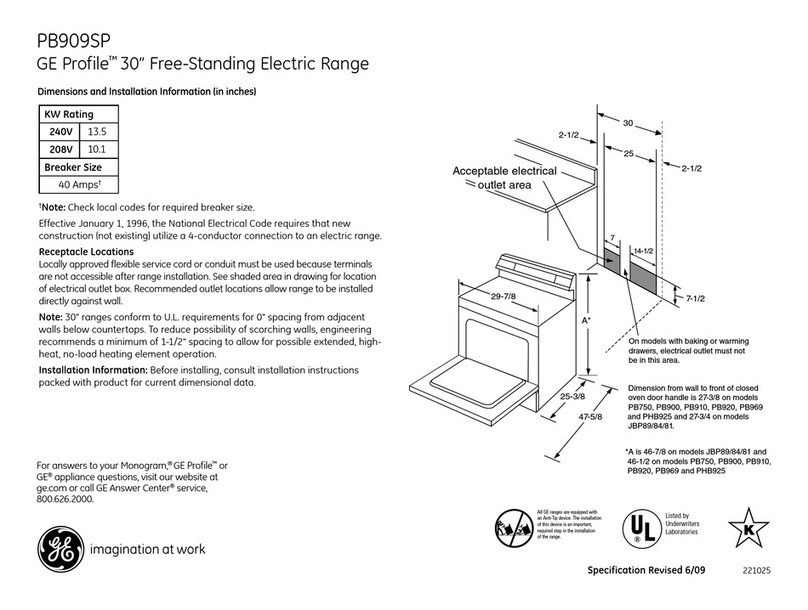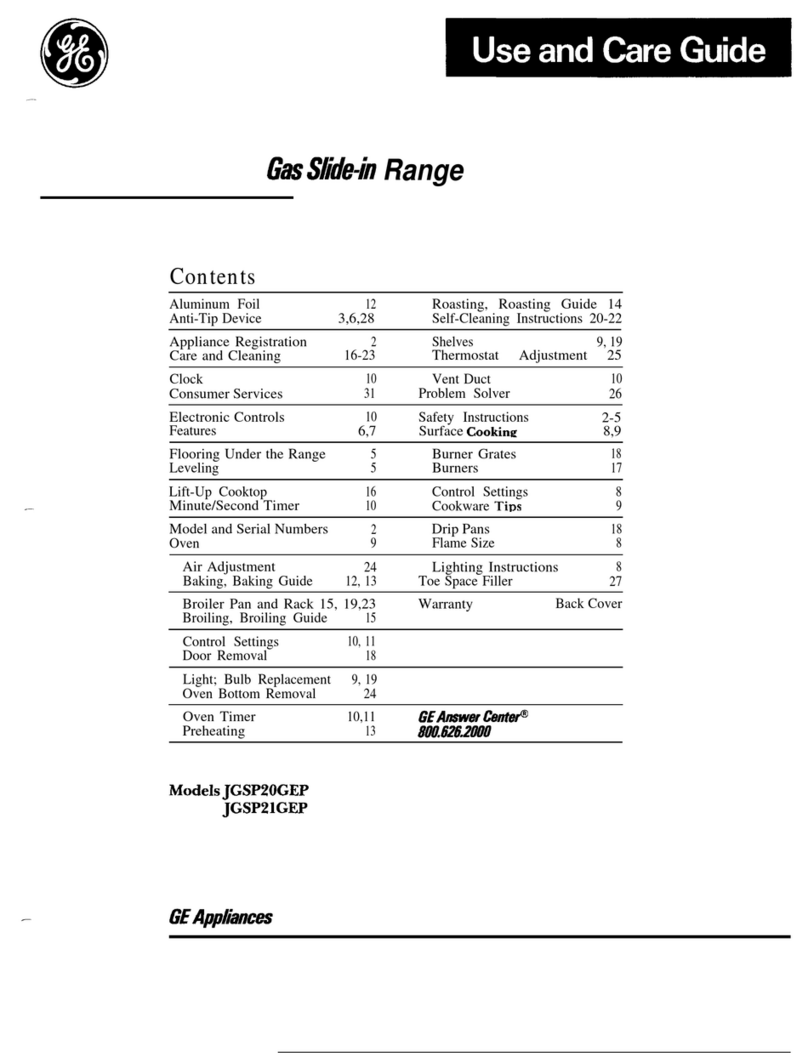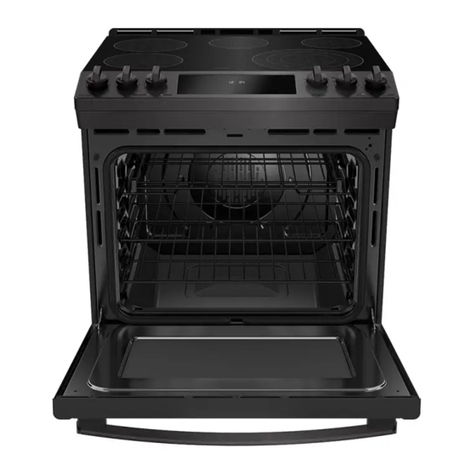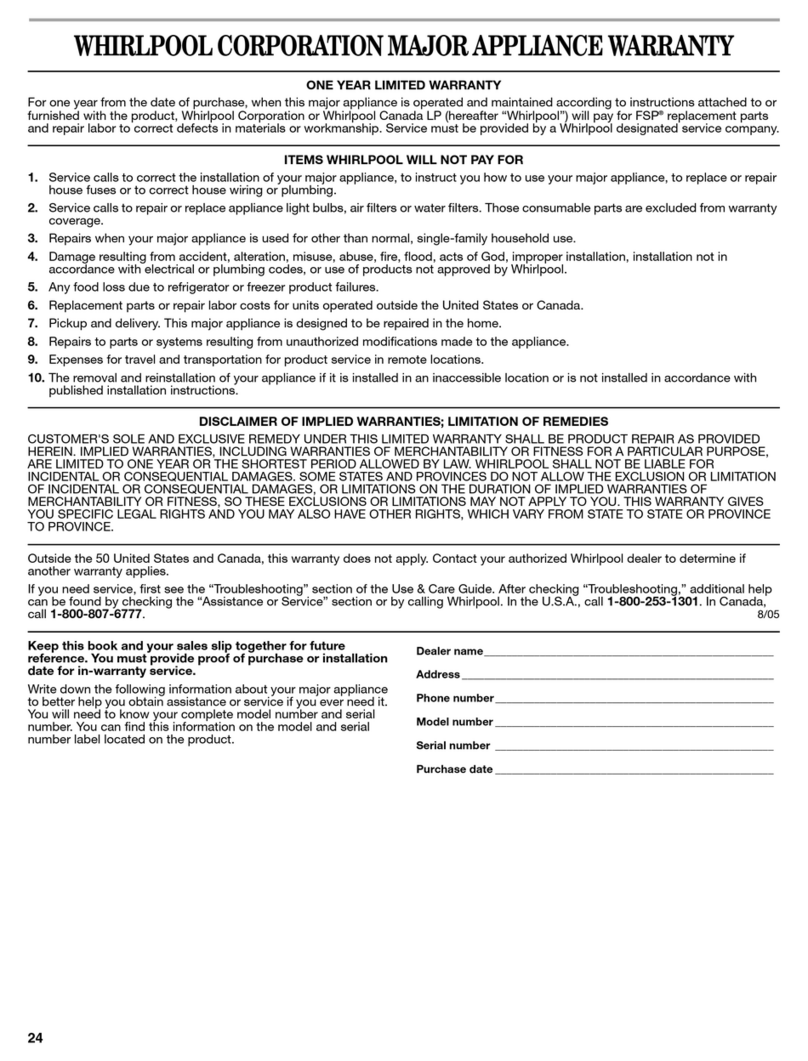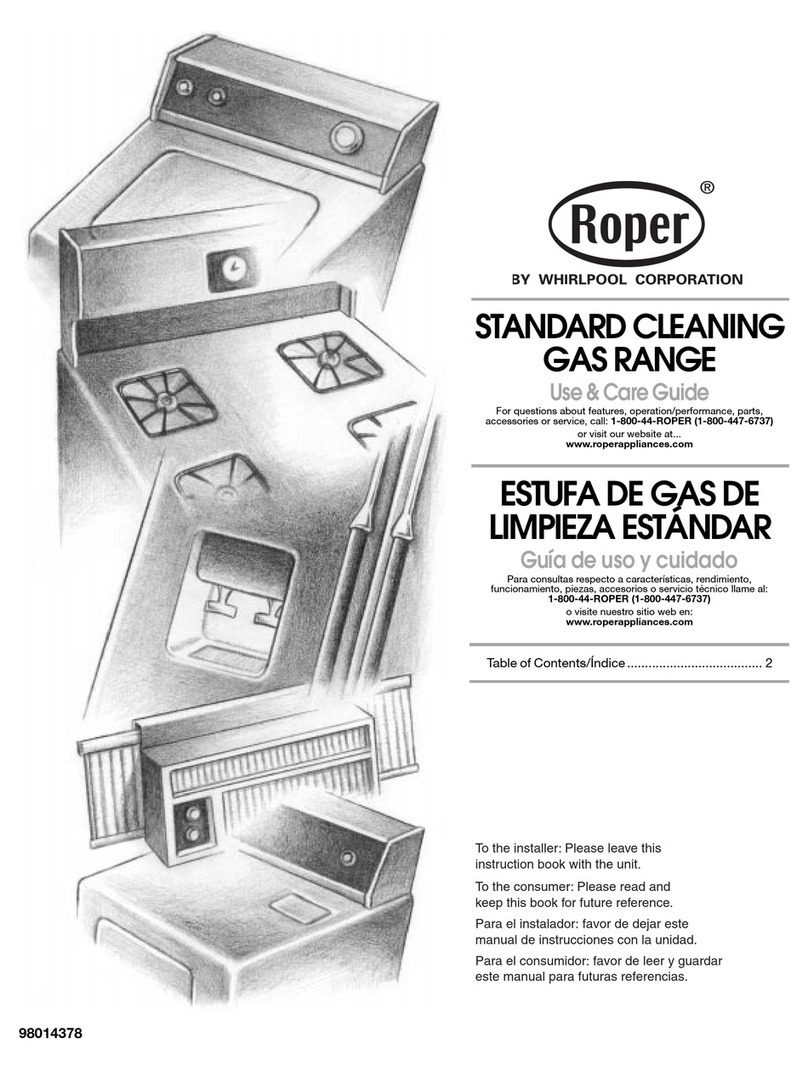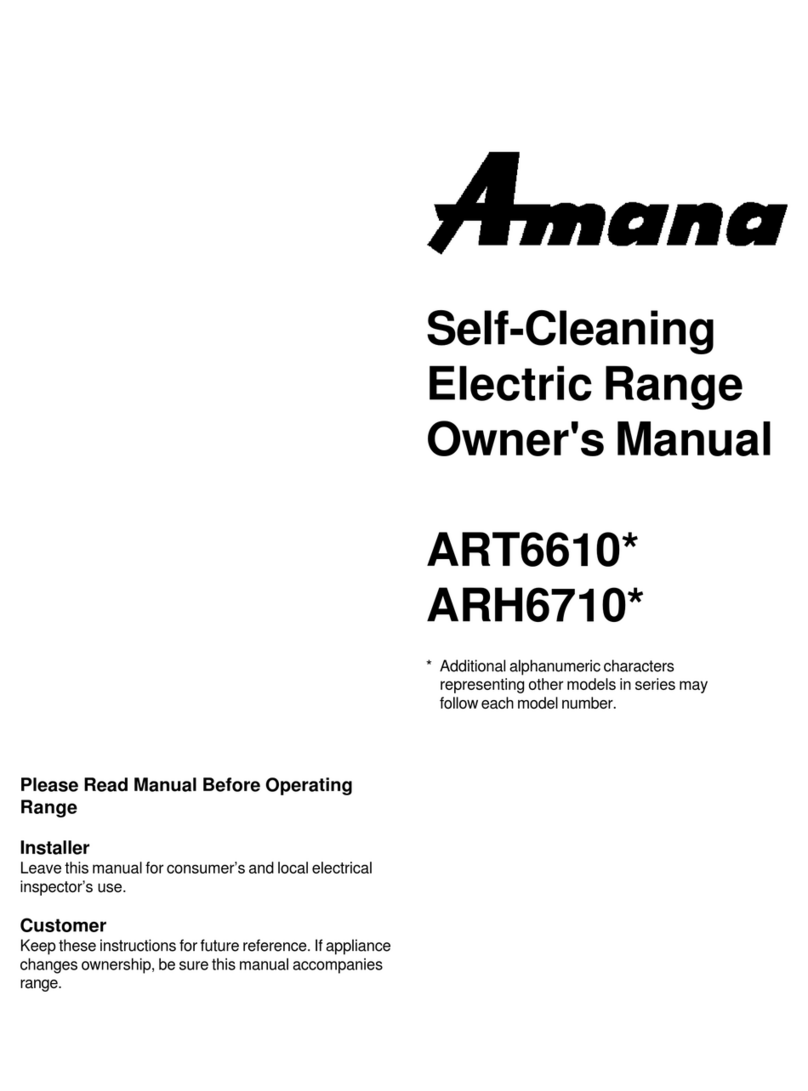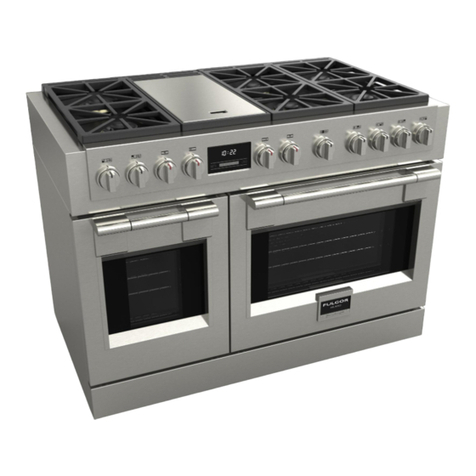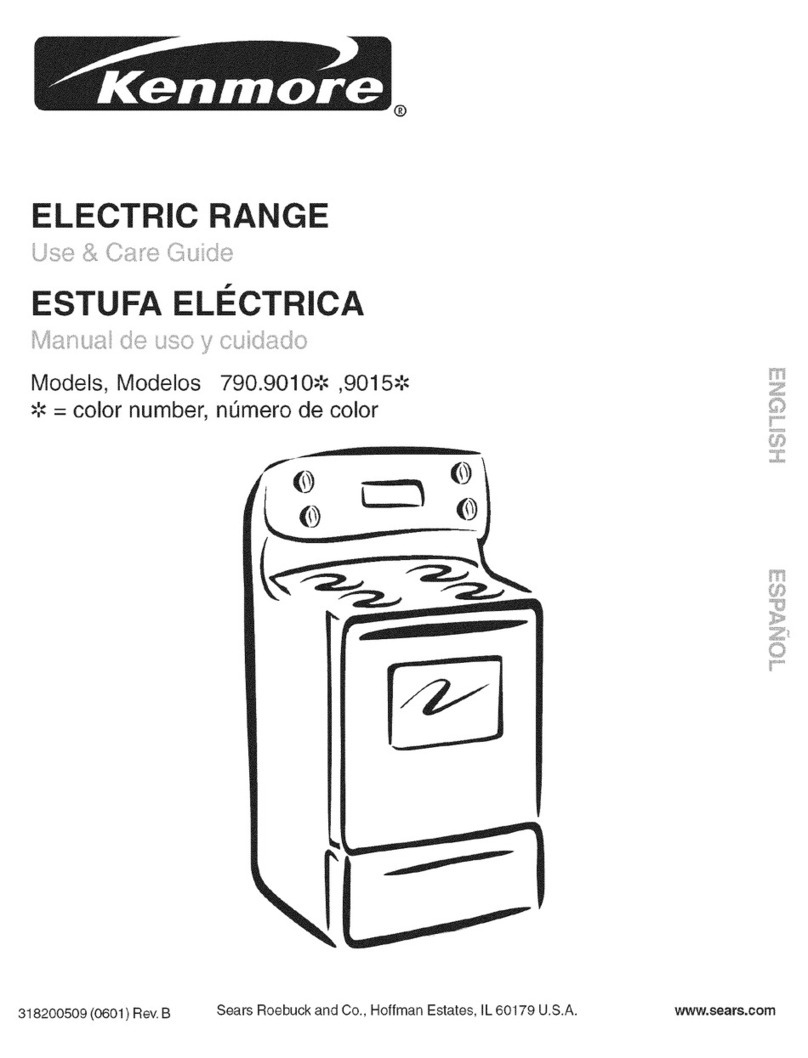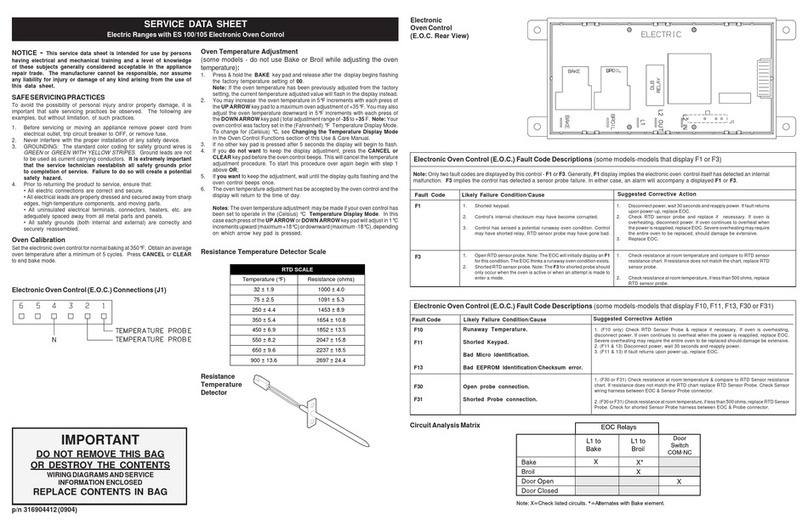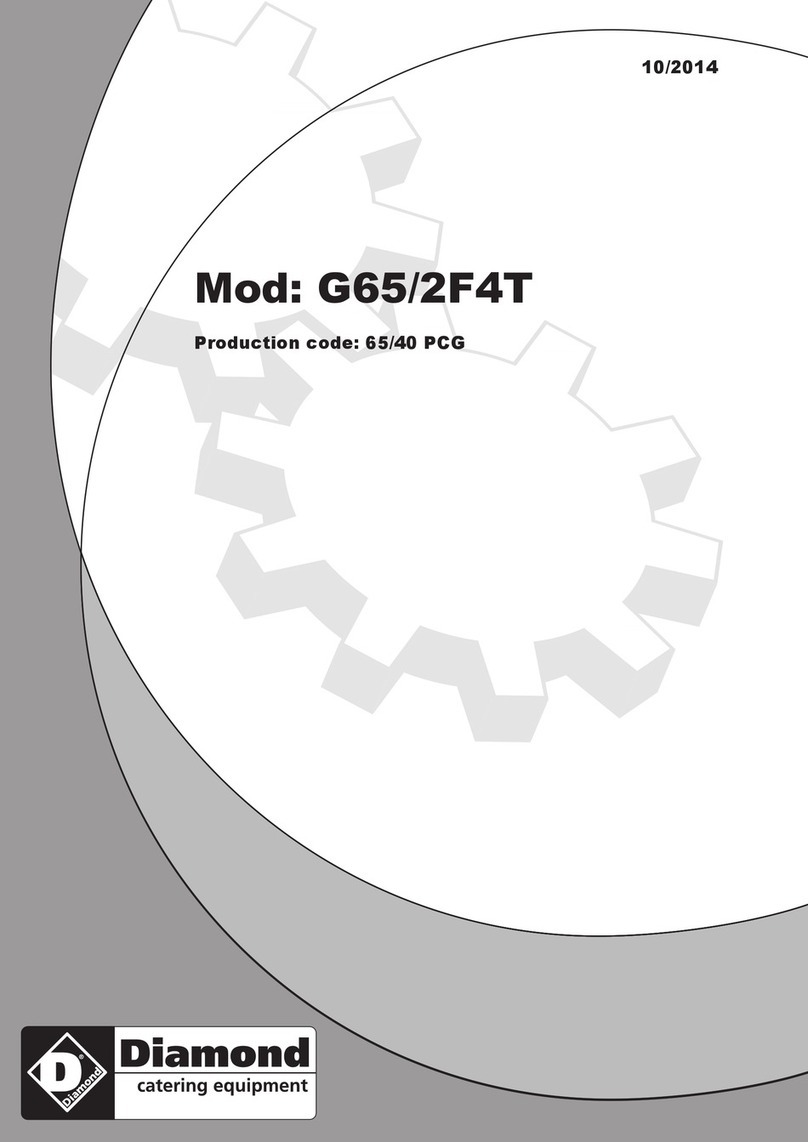
2
IMPORTANT SAFETY INSTRUCTIONS
Installation Instructions
For Your Safety
• All rough-in and spacing dimensions must be
met for safe use of your range.
• To reduce the risk of burns or fire when
reaching over hot surface elements, cabinet
storage space above the cooktop should be
avoided. If cabinet storage space is to be
provided above the cooktop, the risk can be
reduced by installing a range hood that sticks
out at least 5”beyond the front of the
cabinets. Cabinets installed above the
cooktop must be no deeper than 13”.
• Be sure your appliance is properly installed
and grounded by a qualified technician.
Electrical
Requirements
This appliance must be supplied with the
proper voltage and frequency, and connected
to an individual, properly grounded branch
circuit, protected by a circuit breaker or fuse
having amperage as noted on rating plate.
(Rating Plate is located behind the oven door
on the range.)
We recommend you have the electrical wiring
and hookup of your range connected by a
qualified electrician. After installation, have
the electrician show you where your main
range disconnect is located.
Check with your local utilities for electrical
codes which apply in your area. Failure to
wire your range according to governing codes
could result in a hazardous condition. If there
are no local codes, your range must be wired
and fused to meet the requirements of the
National Electrical Code, ANSI/NFPA No. 70–
Latest Edition. You can get a copy by writing:
National Fire Protection Association
Batterymarch Park
Quincy, MA 02269
Effective January 1, 1996, the National
Electrical Code requires that new, but not
existing, construction utilize a four-conductor
connection to an electric range. When
installing an electric range in new construction,
a mobile home, recreational vehicle or an area
where local codes prohibit grounding through
the neutral conductor, follow the instructions in
the section on NEW CONSTRUCTION AND
FOUR-CONDUCTOR BRANCH CIRCUIT
CONNECTION.
You must use a three-wire, single-phase A.C.
208Y/120 Volt or 240/120 Volt, 60 hertz
electrical system. If you connect to aluminum
wiring, properly installed connectors approved
for use with aluminum wiring must be used.
WARNING:
For personal
safety, remove house fuse or
open circuit breaker before
beginning installation. Failure to do so
could result in serious injury or death.
